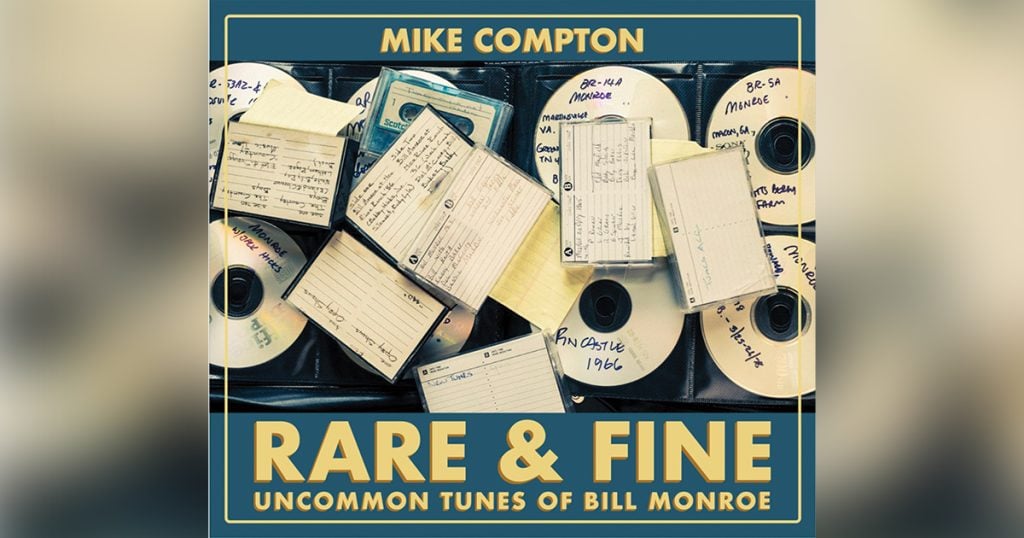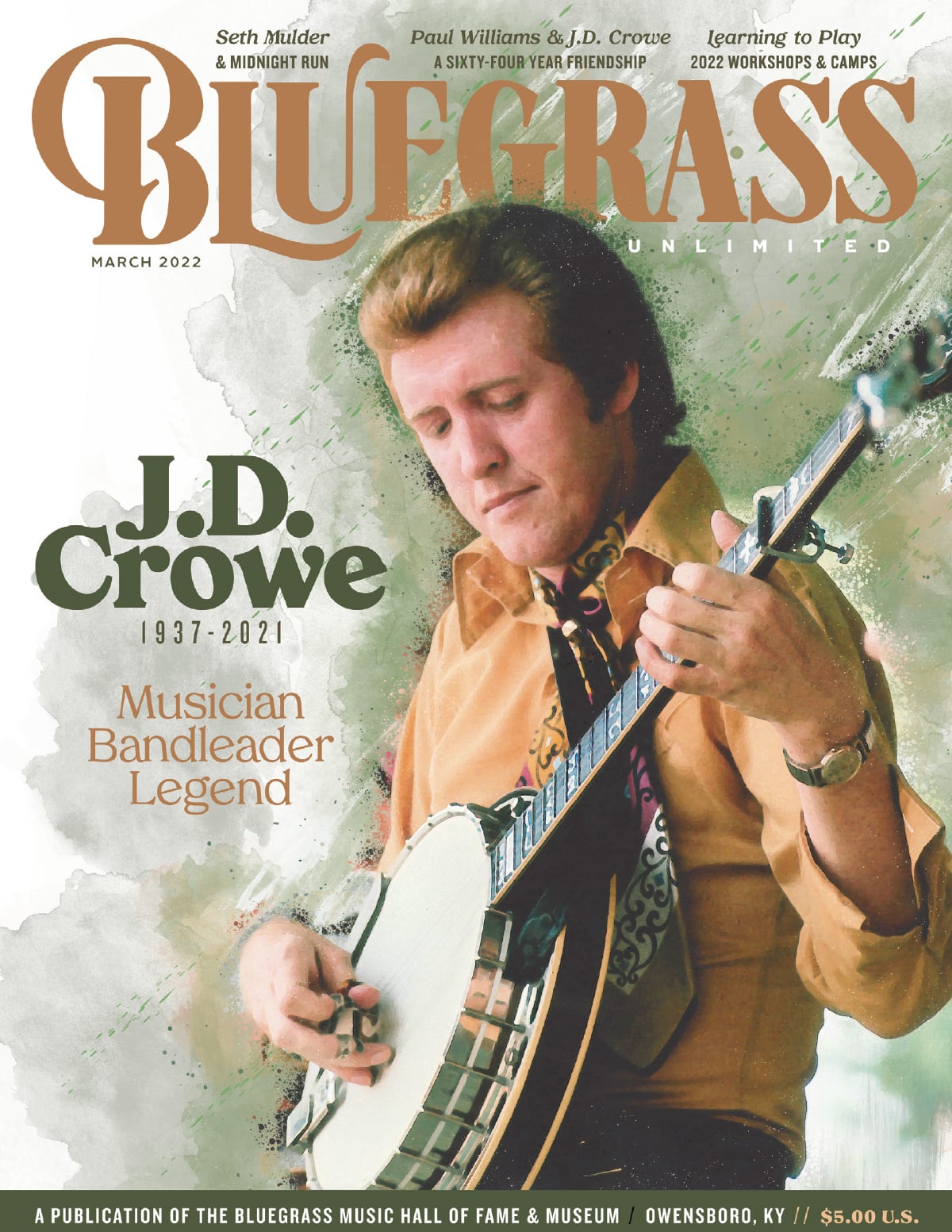Rare and Fine: Unknown Tunes of Bill Monroe
Don’t be fooled by the overalls and Mississippi River-stained drawl, Mike Compton is actually a hard-boiled, gum-shoed detective on a relentless cold case to uncover as much of Bill Monroe’s music legacy as possible, both his compositions and Monroe’s playing style. His ongoing comprehensive book of Monroe transcriptions, last we heard, was around 500 pages and only up to the L’s.
Following a somewhat similar path to his recent Gallop To Georgia project with Norman Blake that revisited the nearly forgotten string music of Narmour & Smith, here Compton has revived 13 unrecorded Monroe compositions and presented them as he believes Big Mon might have when the melodies were new.
The pieces here cover the full gamut of Monroe’s compositional foundations: slow, sad waltzes; two-steppin’ dancehall reels; bluesy dance tunes; breakdowns, and more. “Jemison Breakdown” is delivered deftly, with a very Kenny-like violin line from Laura Orshaw. “Orange Blossom Breakdown” has a hefty Tex Logan feel to its galloping melody, a tune modern players would have a blast with. Just don’t expect to play this number with anywhere near the feel, float, and freedom Compton displays here.
On “California Forest Fire,” Mike’s languidly perfect right hand and artful left hand slurs rise up on full display. Triple fiddles are making a big bluegrass comeback with their prominent place in Bela Fleck’s glorious My Bluegrass Heart project, and they’re presented here in the style favored by Monroe and trad acolytes everywhere. It’s truly a lovely sound with three great fiddlers the likes of Michael Cleveland, Laura Orshaw and Shad Cobb.
For hardcore Monroe mandolin fans, look to his mandolin-guitar duet on Big Mon’s potent “Let’s Get Close Together Blues,” where Mike’s powerful shuffle brings a full band out of the mandolin. “Reelfoot Reel” is a sprightly dance number Bill and Birch might have two-stepped to in the dance halls of Gary and Hammond, Indiana.
“Trail of Tears” is a lovely tune of sorrow and regret, with Mike doing his right hand locomotion where both upstroke and downstroke sound equally, as only he can. Russ Carson’s banjo here sounds frequently like a tribute to Butch Robins, who excelled as Monroe’s melodic partner on tunes like these back in the day. A lovely recording, the studio reverb is perfect, and the fiddles form a truly cohesive sound here.
Throughout this project, the listener is struck by the fact that Compton’s playing is so remarkable because he never sounds like he’s copying a Monroe solo, or even trying to sound like him. He just exudes that elusive sound and vibe he’s chased since a teenager toiling in the fields of his native Meridian, Mississippi, county seat of Lauderdale County.
Fans of the real Monroe would love to see these tunes done live with this band, and we hope Mike plans to do some dates with this group. This is music Monroe lovers will go nuts over, and the rest of the bluegrass world needs badly to hear and expand their understanding of the depth and breadth of Monroe’s musical genius. As Compton, a board-certified Monroeologist says in the liner notes, “and to Bill Monroe, who took more music to his grave than I’ll ever know. Thanks for the tunes, Bossman.” Thanks indeed. Highly recommended. Now go dig up more clues, Detective Compton.

